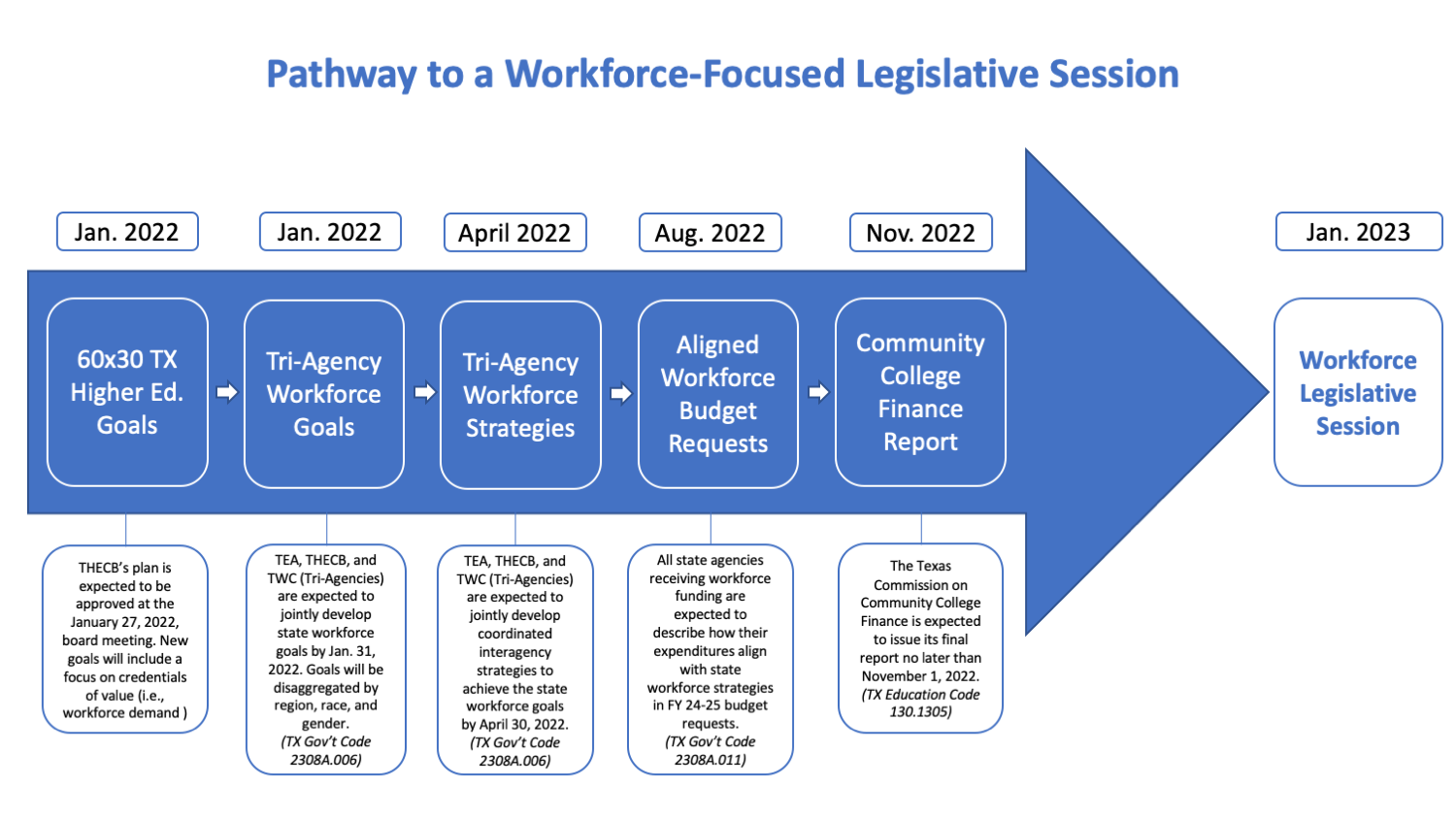Very few Americans will forget April 2020 when the U.S. unemployment hit a record 14.7 percent – the highest since data collection began in 1948. Despite faring better than the national average, Texas, too, suffered record unemployment at close to 13 percent.

Employment Has Recovered But Texas Is Behind Other States
Jobs are coming back and Texans are getting back to work. Out of a growing workforce of over 14 million, nearly 13 million Texans were employed in non-farm jobs in November (the most recent data available from the federal government), surpassing the pre-pandemic high.

Even with this rebound, though, unemployment trends remain uneven across the state. In November, the most recent month for which BLS data is available, unemployment in Texas was around 5.2 percent, which hovers at 1.6 percent above pre-pandemic levels and 1 percent above the national average.
Not only is unemployment above the national average, Texas is significantly lagging several other states including Georgia (2.8 percent), Nebraska (1.8 percent), Oklahoma (2.5 percent), Utah (2.1 percent), West Virginia (4.0 percent), Arkansas (3.4 percent), Montana (2.8 percent), and Wisconsin (3.0 percent) – each of which set or tied record-low unemployment in November.
Texans Are Looking For Better Opportunities
More Texans left their jobs last fall than any other state in the country. Texans left 440,000 jobs in September and 456,000 jobs in October, according to BLS data.

But Texans are not leaving the job market – they’re just changing jobs. In fact, many Texans are leaving their current jobs for better opportunities:
“People are leaving their current occupations to find better opportunities because right now its a job seekers market,” said Jennifer Brady, a spokesperson for Workforce Solutions of Central Texas which provides services to employers, workers and job seekers and tracks the economic status of Central Texas’ 7 counties.
While Texas may be leading the pack in employment shifts, this phenomenon is not unique to Texas. Nationally, 3 percent of the workforce – an all-time high – are leaving their current jobs. That number jumps to 4.4 percent of retail workers, and 7 percent of restaurant and bar workers.

The Workforce Pipeline Is Changing
In recent years, Texas spent roughly $100 billion annually on education and workforce programs, yet only one-third of Texas high school graduates attained a post-secondary degree, despite many jobs now requiring one. And only one-half of Texas households earn a living wage.
The pandemic’s massive disruption of both education and workforce has created an opportunity to rethink Texas students’ progression through our education-to-workforce pipeline and better align opportunities for learning with the skills and training employers need both today and tomorrow.
With the passage of HB 3767 and other legislation last year, we have an opportunity to make meaningful change.
Over the coming year, the Texas Higher Education Coordinating Board, the Texas Education Agency, the Texas Workforce Commission, and other state agencies will be working to improve Texans’ opportunities by aligning new goals and existing resources to most effectively serve the needs of students, hard-working Texans, and small and large employers across our state.
It’s time for us to think big to ensure our state’s long-term prosperity.
 We at Texas 2036 are closely following these efforts and working directly with state officials to provide data and analysis necessary to improve Texas employers’ access to a skilled labor force and increase the likelihood that Texans of all backgrounds can earn a living wage.
We at Texas 2036 are closely following these efforts and working directly with state officials to provide data and analysis necessary to improve Texas employers’ access to a skilled labor force and increase the likelihood that Texans of all backgrounds can earn a living wage.
The Aim Hire Texas Regional Data Tool
Earlier this year, we released a new online dashboard that allows all Texans to explore the current and future workforce across 24 workforce development areas in Texas. This tool brings together data about Texas’ education-to-workforce pipeline from publicly-available state and federal sources to help show what current and future needs are across regions in ways not previously displayed in one place.

Workforce is Essential – Join Us
Texas’ economy continues to grow at a strong pace, and employers are creating thousands of new jobs here in Texas. But our population is growing both quickly and unevenly across the state, and it won’t be enough to rely on pre-pandemic numbers if the “Texas Miracle” is going to continue for future generations.
By leading with data and coming together to identify the goals and strategies that directly link to a thriving economy, we can ensure that Texas will remain the best place to live, work, and raise a family.
